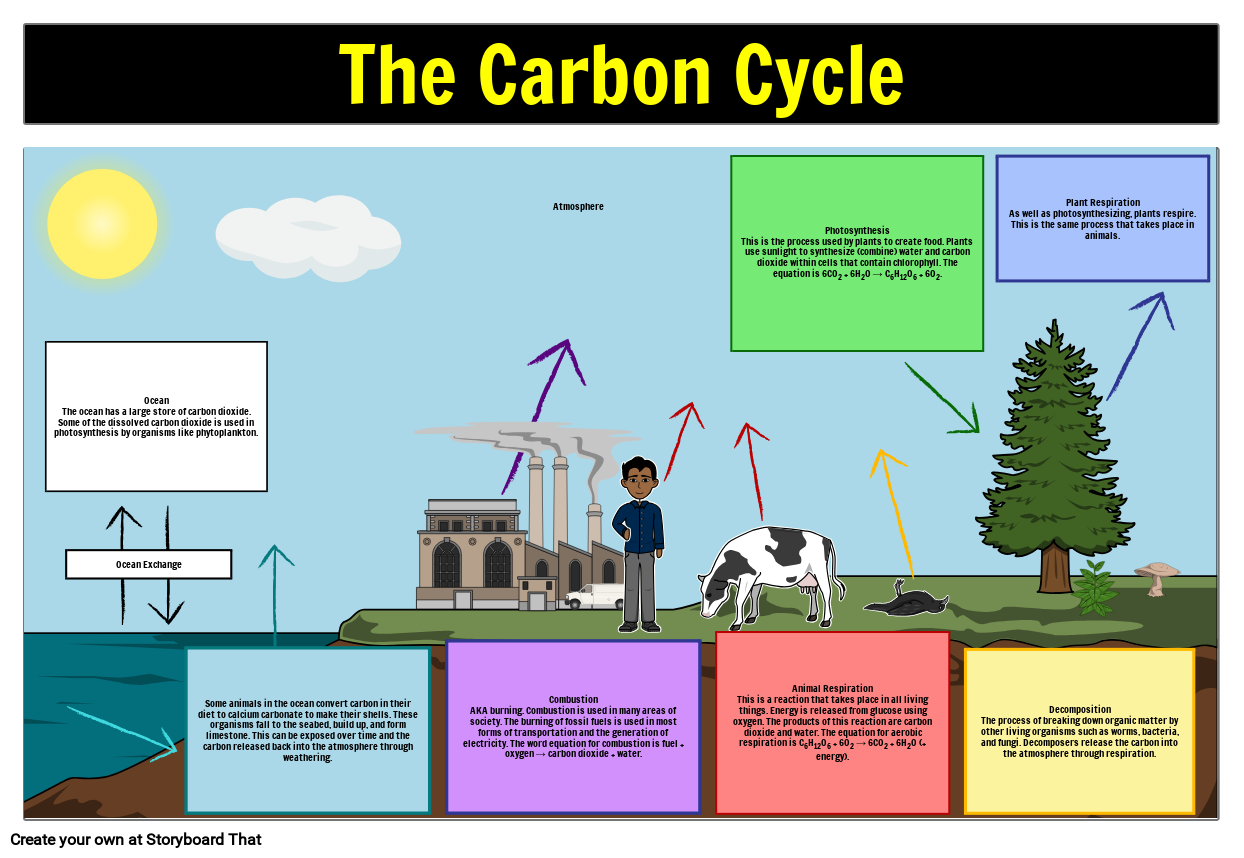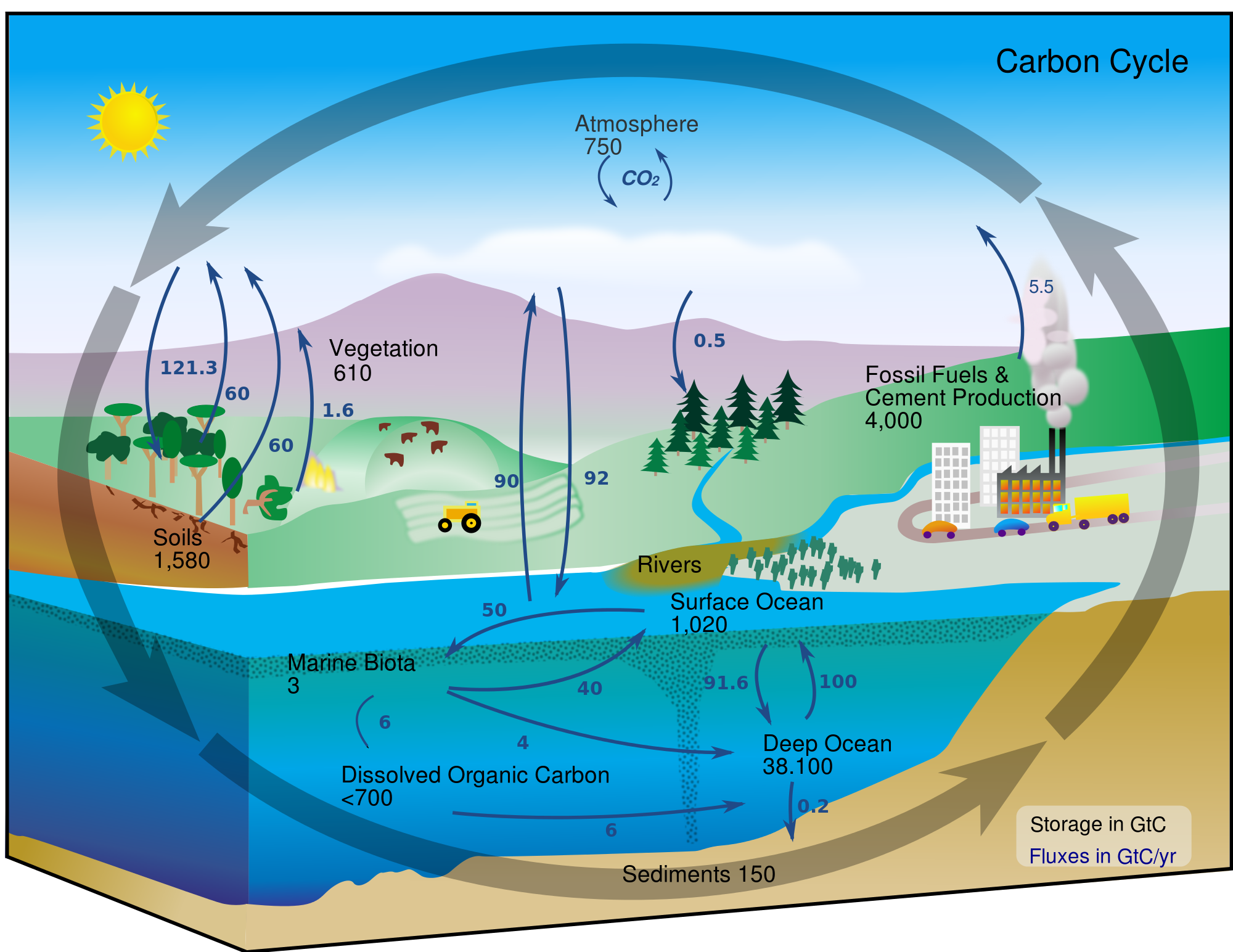

Here phyto-planktons are the equivalents of plants, on whom all life in the oceans depends.

The amounts of carbon that are moved every year are shown as PgC per year in the diagram. There is a constant addition and uptake from this carbon pool. Without this life as it exists would not be possible on earth. Carbon dioxide: Carbon present in air in its gaseous form, CO2, helps keep the earth warm.Terrestrial pools: All the carbon that accumulates in trees and soils form another short-term pool, and are released after some decades or centuries, for example, when trees are cut or die.Ocean surface: Carbon is stored for a short time in the surface water as CO2 dissolved in water or in the bodies of living marine plants and animals.Fossil fuels: The third largest carbon pool are the fossil fuels, such as coal, lignite, natural gas, and oil, which are formed from remains of land and marine plants and animals under special temperature and pressure.Ocean bed: The second largest carbon pool is under the oceans in the form of carbon dioxide (CO2) dissolved in water.Rocks: Most of the carbon is locked away as sedimentary rocks.

One Pg is equal to one billion tons and is also called Gigatons (Gt). The amounts of carbon the pools store is mentioned in Petagram of carbon (PgC).


 0 kommentar(er)
0 kommentar(er)
